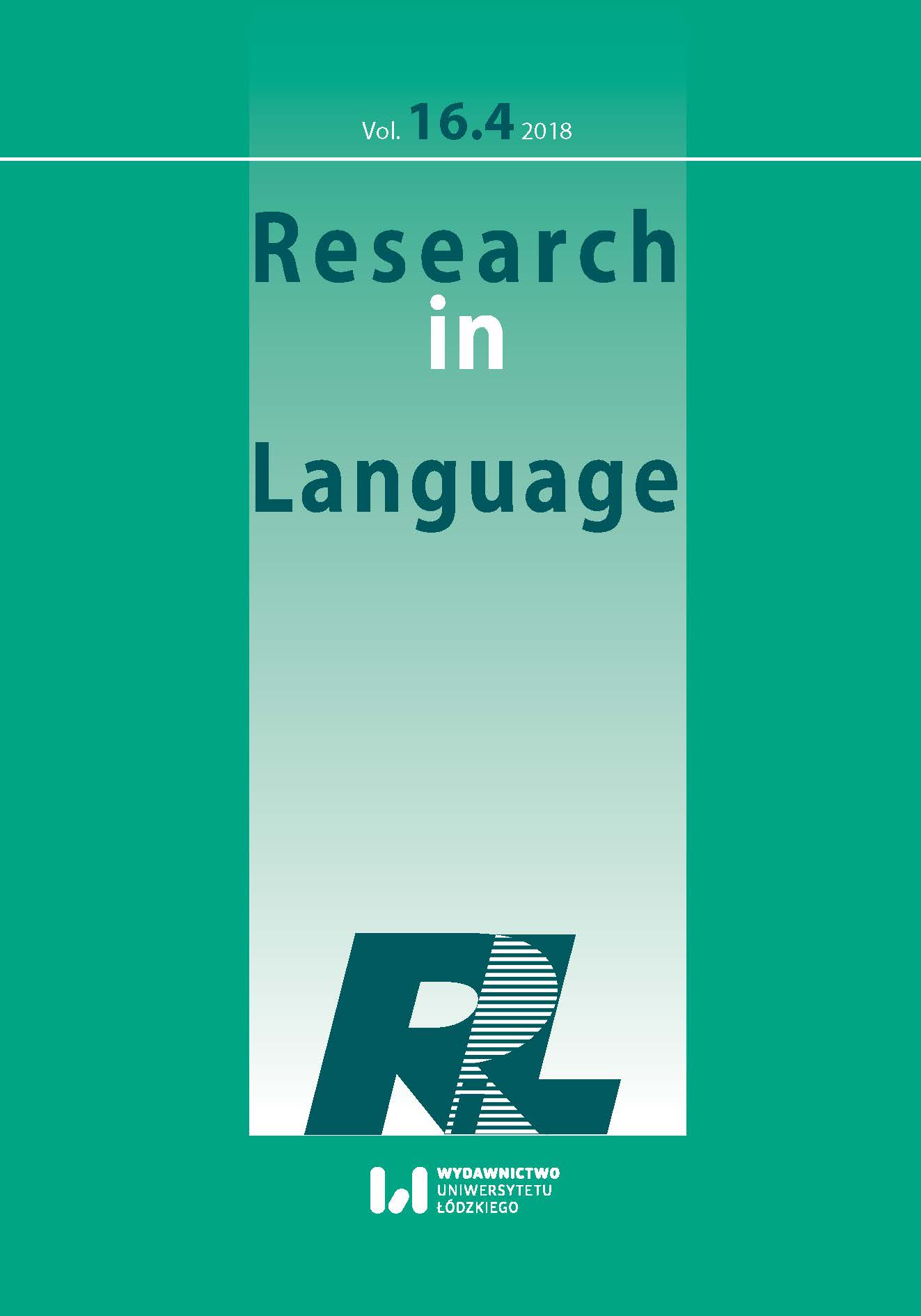Parenthetical Clauses in the Qurʼān
DOI:
https://doi.org/10.2478/rela-2018-0021Keywords:
parenthetical clauses, Relevance Theory, contextual effectAbstract
In the few traditional Arabic grammatical sources that address the term parentheticals it is usually defined as the insertion of a clause between two other clauses, or between two syntactic components, for taʼkīd “emphasis.” In this article I examine Qurʼānic parenthetical clauses in the theoretical framework of relevance theory. It transpires that the parenthetical clause is placed where it achieves optimal relevance and therfore the conveyed utterance does not require the addresses to waste any efforts trying to procees the information and correctly interpret it. Optimal relevance also means having a contextual effect. The Qur’ānic parenthetical clauses have one of the following contextual effects: They serve to affirm God’s omnipotence, indicating that only God produces suras, created heaven and earth. He is the forgiver and all depends on His will; to explain what it meant by a specific statement or to explain the reason behind a certain action; to qualify, to highlight a specific characterization, for example, one of the parenthetical clauses modify the Qur’ān as the truth from God; to provide background information, which could explain further developments in the narrative.
References
Arberry, Arthur J. 1964. The Koran Interpreted. London: Oxford University Press.
Google Scholar
Burton-Roberts, Noel. 2006. Parentheticals. In: Keith E. Brown (ed.), Encyclopaedia of Language and Linguistics, 179–189. Amsterdam: Elsevier.
Google Scholar
Dehé, Nicole, Kavalova Yordanke. 2007. Parentheticals: An Introduction. In: Nicole Dehé and Yordanka Kavalova (eds.), Parentheticals, 1–25. Amserdam/Philadelphia: John Benjamins.
Google Scholar
El-Awa, Salw. 2006. Textual Relations in the Qur’ān: Relevance, Coherence and Structure. London and New York: Routledge.
Google Scholar
Gully, Adrian. 1995. Grammar and Semantics in Medieval Arabic: A Study of Ibn-Hisham’s Mughni l-Labib. London: Curzon Press.
Google Scholar
Haegeman, Liliane. 1988. Parenthetical Adverbials: The Radical Orphanage Approach. In Satoshi. Chiba (ed.), Aspects of Modern English Linguistics. Tokyo: Kaitakushi, 232–254.
Google Scholar
Hoffmann, Ludger. 1998. Parenthesen. Linguistische Berichte 175. 299–328.
Google Scholar
Jackendoff, Ray. 1977. X’ Syntax: A Study of Phrase Structure. Cambridge, MA: The MIT Press.
Google Scholar
Kaltenböck, Gunther. 2007. Spoken Parentheticals Clauses in English: A Taxonomy. In: Nicole Dehé and Yordanka Kavalova (eds.), Parentheticals, 25–53. Amserdam/Philadelphia: John Benjamins.
Google Scholar
Kavalova, Yordanke. 2007. And-Parenthetical Clauses. In: Nicole Dehé and Yordanka Kavalova (Eds.), Parentheticals, 145–173. Amserdam/Philadelphia: John Benjamins.
Google Scholar
Peterson, Peter. 1999. On the Boundaries of Syntax. In: Peter Collins and David Lee (eds.), The Clause in English, 229–250. Amsterdam: John Benjamins.
Google Scholar
Potts, Christopher. 2002. The Syntax and Semantics of As-Parentheticals. Natural Language and Linguistic Theory, 20(3). 623–698.
Google Scholar
Reckendorf, Hermann. 1921. Arabische Syntax. Heidelberg: Carl Winter’s Universitätsbuchhandlung.
Google Scholar
Reinhart, Tania. 1983. Point of View in Language: The Use of Parentheticals. In: Gisa Rauh (ed.), Essays on Deixis, 169–194. Tübingen: Narr.
Google Scholar
Sperber, Dan, Wilson, Deirdre. 1996. Relevance: Communication and Cognition, 2nd ed. Oxford: Blackwell.
Google Scholar
Sperber, Dan, Wilson, Deirdre. 2013. Linguistic Form and Relevance. In: Dan Sperber, Deidre Wilson (Eds.), Meaning and Relevance, 149–169. Cambridge: Cambridge University Press.
Google Scholar
Yus, Francisco. 2009. Relevance Theory. In: Heine Bernd and Narrog Heiko (eds.), The Oxford Handbook of Linguistic Analysis, 753–777. Oxford and New York: Oxford University Press
Google Scholar
Zewi, Tamar. 2007. Parenthesis in Biblical Hebrew. Leiden and Boston: Brill.
Google Scholar
Ziv, Yael. 1985. Parentheticals and Functional Grammar. In: Machtled A. Bolkestein et al. (eds.), Syntax and Pragmatics in Functional Grammar, 181–213. Dordrecht: Foris Publications.
Google Scholar
al-ʻAskarī, ʼAbū Hilāl al-Ḥasan Ibn ʻAbd Allāh. 1971. Kitāb aṣ-ṣināʻatayni: al-kitab wa-š-šiʻr. Beirut: Dār al-kutub al-ʻilmiyya.
Google Scholar
al-Bayḍāwī, ʻAbdallāh Ibn ʻUmar. 1996. ʼAnwār at-tanzīl wa-’asrār at-taʼwīl. Cairo: Maktabat wa-maṭba ʻat al-mašhad al-ḥusaynī.
Google Scholar
Ibn Ğinnī, ʼAbū al-Fatḥ ʻUṯmān. 1913. al-Ḫaṣāʼiṣ. Cairo: Maṭbaʻat al-hilāl.
Google Scholar
Ḥasan, Sāmī ʻAṭā. 2012. al-Ğumla al-muʻtariḍa fī l-Qurʼān al-karīm: mawāḍiʻ ʻuhā wa-dalālatihā. Amman: Dār al-furqān li-n-Našr wa-t-tawzīʻ.
Google Scholar
Ibn ʻĀšūr, Muḥammad aṭ-Ṭāhir. at-Taḥrīr wa-t-tanwīr. 1992. ad-Dār at-tunisiyya li-n-našr.
Google Scholar
‘Ibn Hišām, Ğamāl ad-Dīn al-’Anṣārī. 1991 Muġnī al-labīb. Beirut: Dār al-Ğīl.
Google Scholar
an-Nasafī, ʻAbdallāh Ibn Aḥmad. 1996. Madārik at-tanzīl wa-ḥaqā’iq at-ta’wīl. Beirut: Dār an-nafā’is.
Google Scholar
al-Qazwīnī, Ğalāl ad-Dīn Muḥammad Ibn ʻAbd ar-Raḥman. 2002. Talḫīṣ al-miftāḥ fī l-maʻānī wal-bayān wa-l-badīʻ. Beirut: al-Maktaba al-ʻaṣriyya.
Google Scholar
ar-Rāzī, Muḥammad Faḫr ad-Dīn. 1993. Mafātīḥ al-ġayb. Beirut: Dār al-fikr li-ṭ-ṭibāʻa wa-n-našr wa-t-tawzīʻ.
Google Scholar
ar-Rāzī, Muḥammad Faḫr ad-Dīn. 2000. Mafātīḥ al-ġayb. Beirut: Dār al-kutub al-ʻilmiyya.
Google Scholar
aš-Šawkānī, Muḥammad ʻAlī Ibn Muḥammad. 1997. Fatḥ al-qadīr. al-Manṣūra: Dār al-wafā’ li-ṭ-ṭibāʻa wa-n-našr wa-t-tawzīʻ.
Google Scholar
Ṭanṭāwī, Muḥammad Sayyid. 1992. at-Tafsīr al-wasīṭ li-l-Qurʼān al-karīm. Cairo: Dār al-maʻārif.
Google Scholar
Yāqūt, Maḥmūd Sulaymān. 1998. ʼIʻrāb al-Qurʼān al-karīm. Dār al-maʻrifa al-ğamiʻiyya.
Google Scholar
az-Zamaḫšarī, ʼAbū al-Qāsim Muḥammad Ibn ʻUmar. 1947. al-Kaššāf ʻan ḥaqāʼiq ġawāmiḍ at-tanzīl. Beirut: Dār al-kitāb al-ʻarabī.
Google Scholar
Downloads
Published
How to Cite
Issue
Section
License

This work is licensed under a Creative Commons Attribution-NonCommercial-NoDerivatives 4.0 International License.










